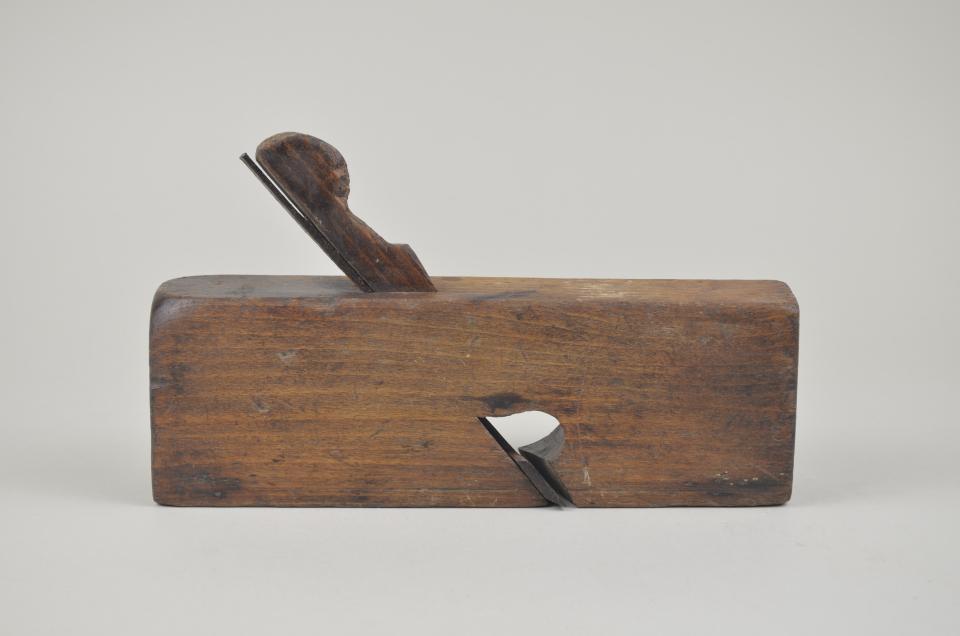
Length 24.0cm x Width 4.6cm x Height 14.3cm
a- Length 24.0cm x Width 4.6cm x Height 7.7cm
b- Length 12.8cm x Width 2.5cm x Height 1.7cm
c- Length 17.7cm x Width 5.0cm x Height 0.4cm
Rabbet grooving plane comprised of three parts, a rectangular wooden body with a flat sole (a), a wooden wedge that tapers at the bottom and is rounded at the top (b), and an iron with a wide flat blade at the bottom (c). The wedge and the iron fit together inside of the plane through an angled cutout in the body, and the wedge holds the iron in place as the plane runs across the wood surface below. Stamped on the toe of the plane is "JOHN BELL PHILAD", "M. HEYSER.", "S. HEYSER.", and "I BLOWER". Stamped on the heel of the plane is "I BLOWER".
The rebate plane (British English) or rabbet plane (American English) is a hand plane designed for cutting rebates/rabbets in wood. It's a simple tool used in many Western countries with hundreds of years of history. It was in use in England at least as early as the 11th century. The rebate plane is one of a group of planes, including the shoulder plane, bullnose plane and carriage makers plane, in which the blade protrudes by a very small amount—usually less than half a millimetre—from the sides of the plane body on both sides. The blade is very slightly wider than the body of the plane. The reason for the slight protrusion of the blade is so that the plane body does not bind on the side of the cut, which would result in the side wall of the rabbet not being perpendicular to the bottom. Rebate planes are intended for long grain cutting and are generally set up to remove large amounts of material quickly. The mouth is set quite coarsely to allow large chips to be removed.
